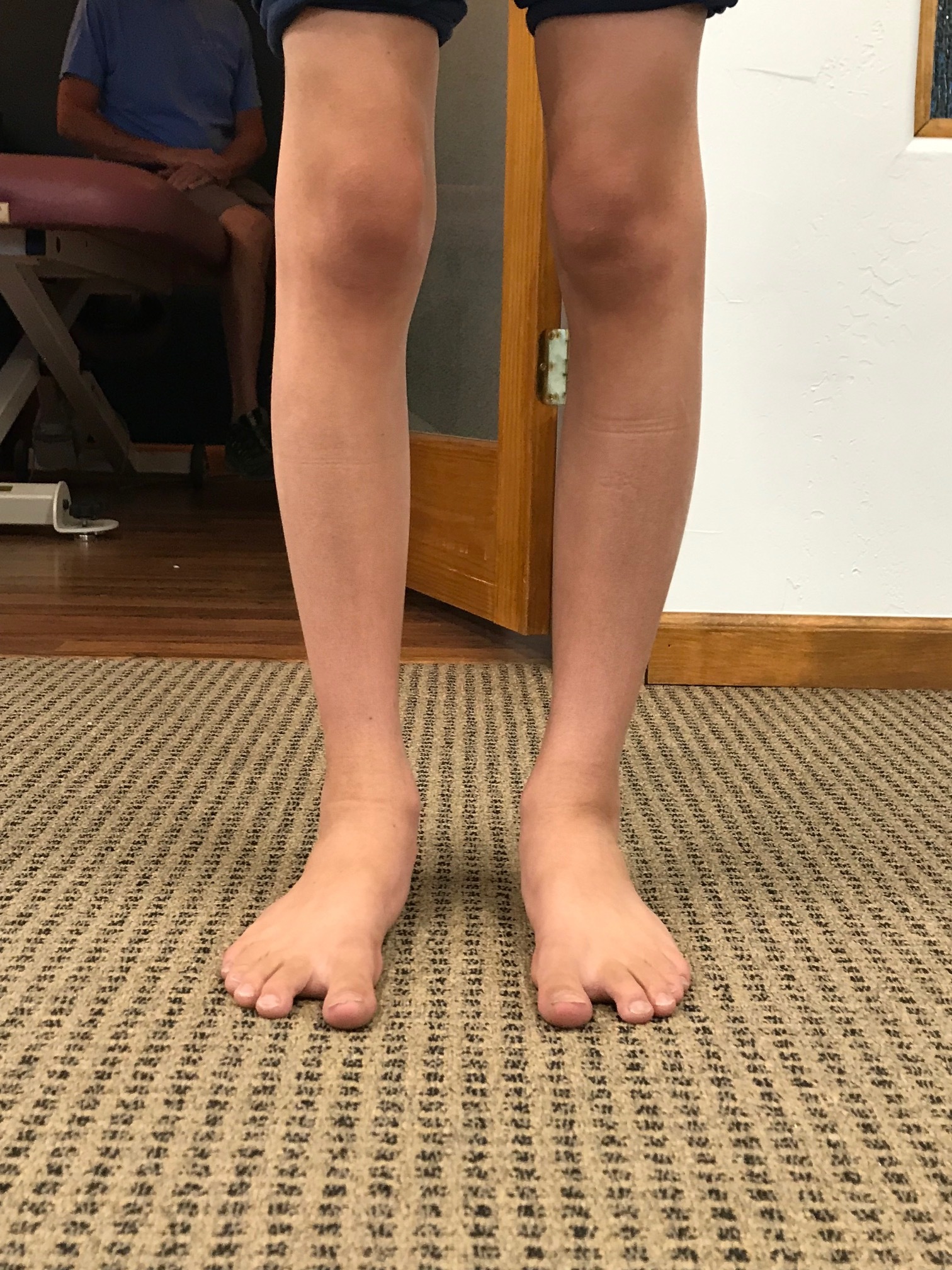External tibial torsion or femoral retrotorsion?
/This young lad presents to your office complaining of bilateral knee discomfort at the medial aspect, just below the patella, particularly when ascending and descending stairs and hills. You narrow it down to abnormal patellar tracking and 2 possibilities of who is driving the bus, but which is it?
Torsions of an extremity are said to exist when they measure two or more standard deviation‘s outside of normal. In external tibial torsion, the shaft of the tibia over rotates more than it’s 1.5° per year from zero at birth to greater than 19°. You are left with a foot that is has an increased progression angle and a center of gravity falls medial to the foot causing abnormal patellar tracking.
Femoral retro torsion is said to exist when the head of the femur over reduces from its 35° angle at birth to less than 8° resulting in severely limited internal rotation of the hips bilaterally. The lower extremity is often externally rotated to compensate.
An easy differential for the 2 is to drop a plumbline from the tibial tuberosity through the foot. This line normally passes through the second or between the second and third metatarsal‘s. If it falls medial to that it is eternal tibial torsion and lateral to that most likely internal tibial torsion or potentially a metatarsus varus or forefoot adductus.
Another differential would be to perform “Craigs test” and measure how much internal and external rotation of the femur there is at the femoral acetabular articulation.
An easier way to put it is; those with femoral retrotorsion have less hip internal rotation and often increased amounts of external rotation; often they can’t even get past zero, never mind the requisite 4-6 degrees for normal gait. Those with increased internal rotation and diminished external rotation most likely have femoral antetorsion.
So, Which is it? When his knees are Straightahead, his feet point out; when his feet are straightahead, his knees point inward. A plumbline from the tibial tuberosity passes medial to the second metatarsal. Looking at the pictures, you can see that he is external tibial torsion along with a sandal thong deformity that we talked about last week.
Dr Ivo Waerlop, one of The Gait Guys.
#externaltibialtorsion #outturnedfoot #increasedprogressionangle #kneepain #thegaitguys


















